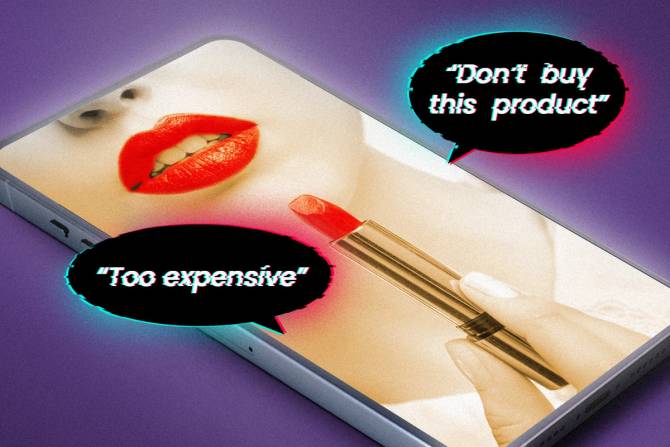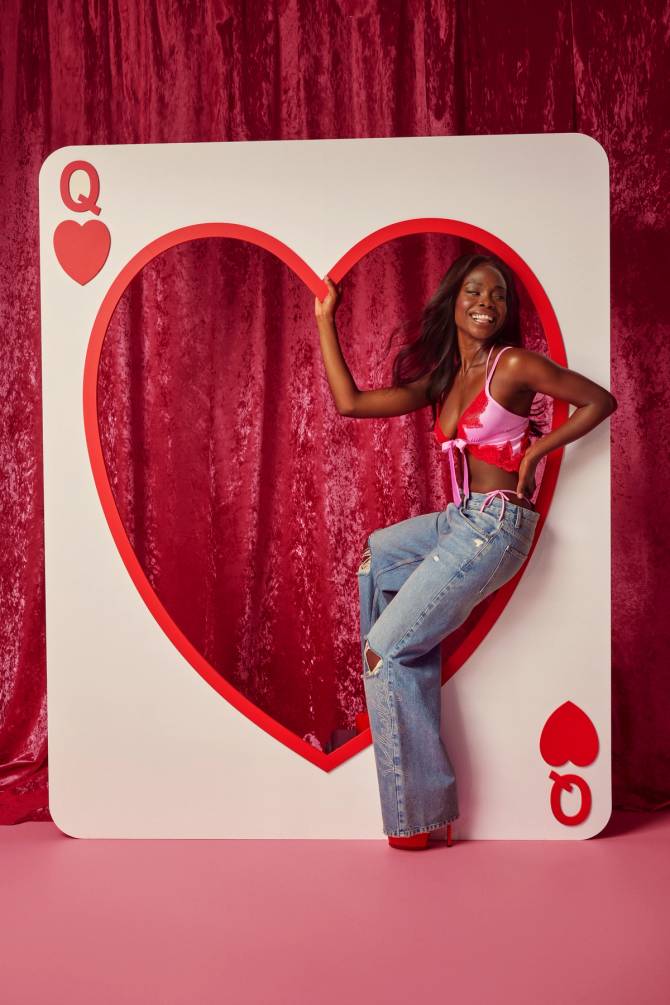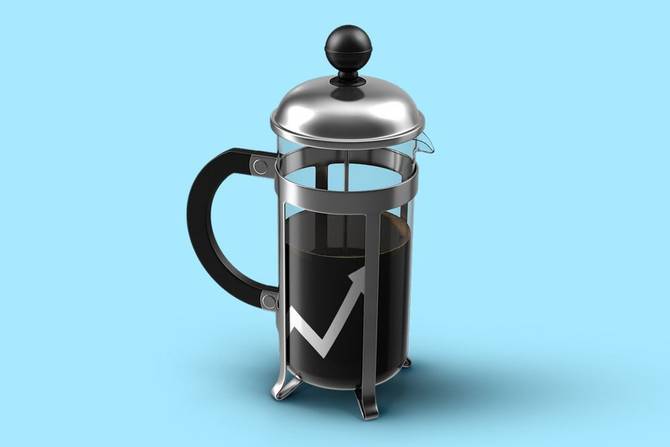Happy Thursday. Before reading today’s newsletter, we suggest you take a quick break, brew a cup of coffee, and take this survey. It’ll help us learn a little bit more about our readers and what sorts of industry coverage you’ll be looking for in the year ahead. If you take it, you’ll also be entered into a raffle for a $250 AmEx gift card. 
In today’s edition:
—Katie Hicks, Alyssa Meyers, Jeena Sharma
|
|
Illustration: Francis Scialabba, Photo: Paper Boat Creative/Getty Images
There’s a new phrase going around TikTok these days: “deinfluencing.”
The term, which has more than 100 million views on TikTok, can more or less be defined as a pushback against trendy (and often expensive) products promoted or recommended by influencers. Many creators themselves are in on the trend, telling people what they shouldn’t buy.
Some have wondered if and how this will impact influencers as a whole, whose brand deals make up a multi-billion dollar industry. But as people seize the moment to promote dupes and less-expensive alternatives to some of the pricier products typically plugged on social media, some marketers told us it’s still influencing by any other name.
“No one needs seven blushes”
In deinfluencing videos, you’ll often find people discussing or showing stockpiles of influencer-promoted products they’ve accumulated over the years.
-
Some people have said that they’re deinfluencing themselves to combat extra spending, while some influencers have said they don’t feel comfortable contributing to overconsumption.
-
Emma Austin, a social media marketing manager, has been outspoken about deinfluencing on TikTok, offering tips on how to save money and think more consciously before purchasing, especially given the current economy.
- She told us the trend is about “putting the power back into the consumers’ hands instead of just jumping on every single person’s opinion.”
Some of the brands that have been named in deinfluencing videos include Stanley 1913, Charlotte Tilbury, and Olaplex. Stanley declined to comment, while the other brands did not respond to Marketing Brew’s request for comment.
So, is this the beginning of the end for influencers? Austin said she doesn’t think so. However, in order to resonate with consumers in a time of deinfluencing, Austin said brands should look to work with influencers who are “very specifically for their niche, who have a really good reputation, and are really engaged in their community.”
Keep reading here.—KH
|
|
TOGETHER WITH STELLA RISING
|
|
Change comes at you fast. And if you’re a digital marketer, it can be downright exhausting. Between platform restrictions, cookie deprecation, and iOS updates, reaching consumers and breaking through to success is harder than ever. Plus, media is straight-up expensive.
But Stella Rising has the solution: Spark. This tool is built to ignite insights so you can focus on boosting your brand beyond core channels, driving successful DTC, crushing retail goals, and increasing marketplace sales.
And the cherry on top? Stella Rising’s team uses a consumer-focused omnichannel approach, so they can “forward-think” for you. They’ll show you where and how to invest and how to make the most of your returns.
Adapt with Stella Rising.
|
|
Dbenitostock/Getty Images
Black Americans are regularly listening to podcasts at higher rates than the US general population, a role reversal from 2021, a report from SXM Media, Mindshare, and Edison Research published this month suggests.
As of a 2022 survey of more than 2,500 Black Americans, 43% said they’d listened to a podcast in the past month, up from 36% in 2021, the first year the survey was conducted. Meanwhile, the share of respondents who said they’d listened to a podcast in the past month slightly declined from 41% in 2021 to 38%, according to Edison’s Infinite Dial study from 2022, which surveyed 1,502 Americans over the age of 12.
Big picture: The increase in listenership among Black Americans could be the result of a recent push from podcast companies to increase representation among hosts and illustrate the role advertisers can play in making the channel more diverse.
New kids on the block: About half (48%) of Black monthly podcast listeners surveyed said they’ve been listening for less than a year. That means they might not yet be as familiar with the channel’s rotating cast of advertisers.
- These newer listeners are also fairly receptive to podcast ads, the report found, which could open a door for brands that want to market to Black Americans, Nidia Serrano, VP of sales marketing at SXM Media, told Marketing Brew.
- “Because these listeners are so new to podcasts, everything is new to them, the advertisers are new to them,” Serrano said. “In other spaces, they may be a little fatigued. We learned how to navigate away from ads in other spaces.”
Continue reading here.—AM
|
|
Playboy
Retail Brew’s Jeena Sharma recently talked to Jason Mahler, Playboy’s VP of design, about how the brand is trying to win over Gen Z. Read part of the story below, or click here for the full read.
Playboy is not playing around with its Valentine’s Day lingerie collection (yes, we’re talking about the Playboy that you’re thinking of). Inspired by the iconic Pamela Anderson cover of the February 1991 issue of Playboy magazine, the Miss February collection—which came out last month—comes adorned with lace and hearts.
While the brand already sold casual underwear as part of its capsule collection that debuted in November 2022, the Miss February collection has been a year in the making and is designed to be a tad more racy. The collection is part of the company’s overarching strategy—a key component of which is retail—to transition from a brand that used to represent “entertainment for men” to one focused on “pleasure for all,” according to its website.
|
|
|
Save a little dough. Your organization’s growth starts with a solid go-to-market strategy. And Upsiide’s innovative insights platform helps you test and launch new ideas quickly. Wanna taste? Pizza Hut paired with Upsiide to test new menu innovations and marketing messaging—and deploy the best ideas quickly. Start innovating with advanced analytics today.
|
|
Francis Scialabba
There are a lot of bad marketing tips out there. These aren’t those.
Sounds of Sunday: An analysis of broadcast network NFL theme music.
Cheers: A barrage of beer brands and other ad trends to keep an eye out for on Super Bowl Sunday.
Define the relationship: Breaking down the basics of user experience and its importance for SEO.
 Unlock subscription success: Did you know the retail subscriptions market is expected to hit $1.5t by 2025? Learn how and why your brand should consider adopting this model. Unlock subscription success: Did you know the retail subscriptions market is expected to hit $1.5t by 2025? Learn how and why your brand should consider adopting this model.
|
|
-
Amazon increased its spending on ads and promos to $20.6 billion last year, up 22% year over year, setting a new record for annual marketing spend, according to Ad Age Datacenter.
-
Omnicom reported an organic revenue growth increase of 7.2% in Q4 while its total organic revenue for the quarter increased by 0.3% year over year to $3.87 billion.
-
Mastodon has experienced a large drop in monthly active users following the bump it received when Twitter users flocked to the platform last year, per Wired.
-
Google is sunsetting a feature that enabled users to play podcasts directly in Google Search results.
-
Ben Affleck is officially starring in a Super Bowl ad for Dunkin’ (and J. Lo is making an appearance).
|
|
In honor of the Super Bowl this weekend, today’s market research is focused on the game’s advertisers. Morning Consult ranked 28 of them by favorability, according to a recent survey of more than 2,200 US adults. Here’s who came out on top (and bottom).
Snack time: Several snack companies were among the most favorable brands advertising in this year’s Super Bowl. M&Ms, despite recent, uh, controversy over its spokescandies, clocked the highest net favorability rating at 78. That’s the share of respondents who said they had a favorable opinion of the brand minus the share who said they had an unfavorable opinion of the brand.
- Doritos, Pringles, and Planters also made the top five, with respective favorability ratings of 75, 70, and 63.
- Downy crashed the snack party at No. 4, coming in with a favorability rating of 68.
Pour one out: With Anheuser-Busch no longer the exclusive alcohol sponsor of the Super Bowl for the first time in 33 years, the gates have been opened for more alcohol brands to run ads in the game. But their favorability ratings are just so-so.
- Budweiser, Bud Light, Heineken, Michelob Ultra, Coors Light, and Miller Light all scored in the middle of the pack, with favorability ratings ranging from 16 to 25.
- Cointreau, Busch Light, and Botanist Gin had the lowest favorability ratings of all 28 brands.
|
|
Catch up on a few Marketing Brew stories you might have missed.
|
|
|
Written by
Katie Hicks, Alyssa Meyers, and Jeena Sharma
Was this email forwarded to you? Sign up
here.
Take The Brew to work
Get smarter in just 5 minutes
Business education without the BS
Interested in podcasts?
|
ADVERTISE
//
CAREERS
//
SHOP 10% OFF
//
FAQ
Update your email preferences or unsubscribe
here.
View our privacy policy
here.
Copyright ©
2023
Morning Brew. All rights reserved.
22 W 19th St, 4th Floor, New York, NY 10011
|
|









